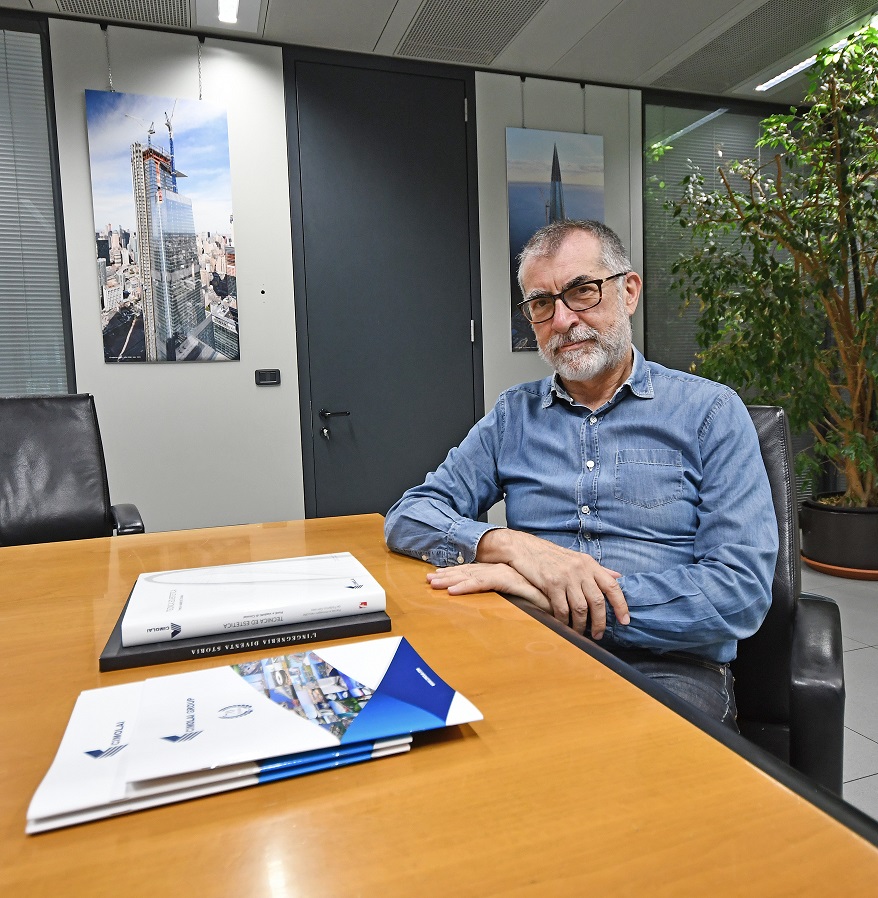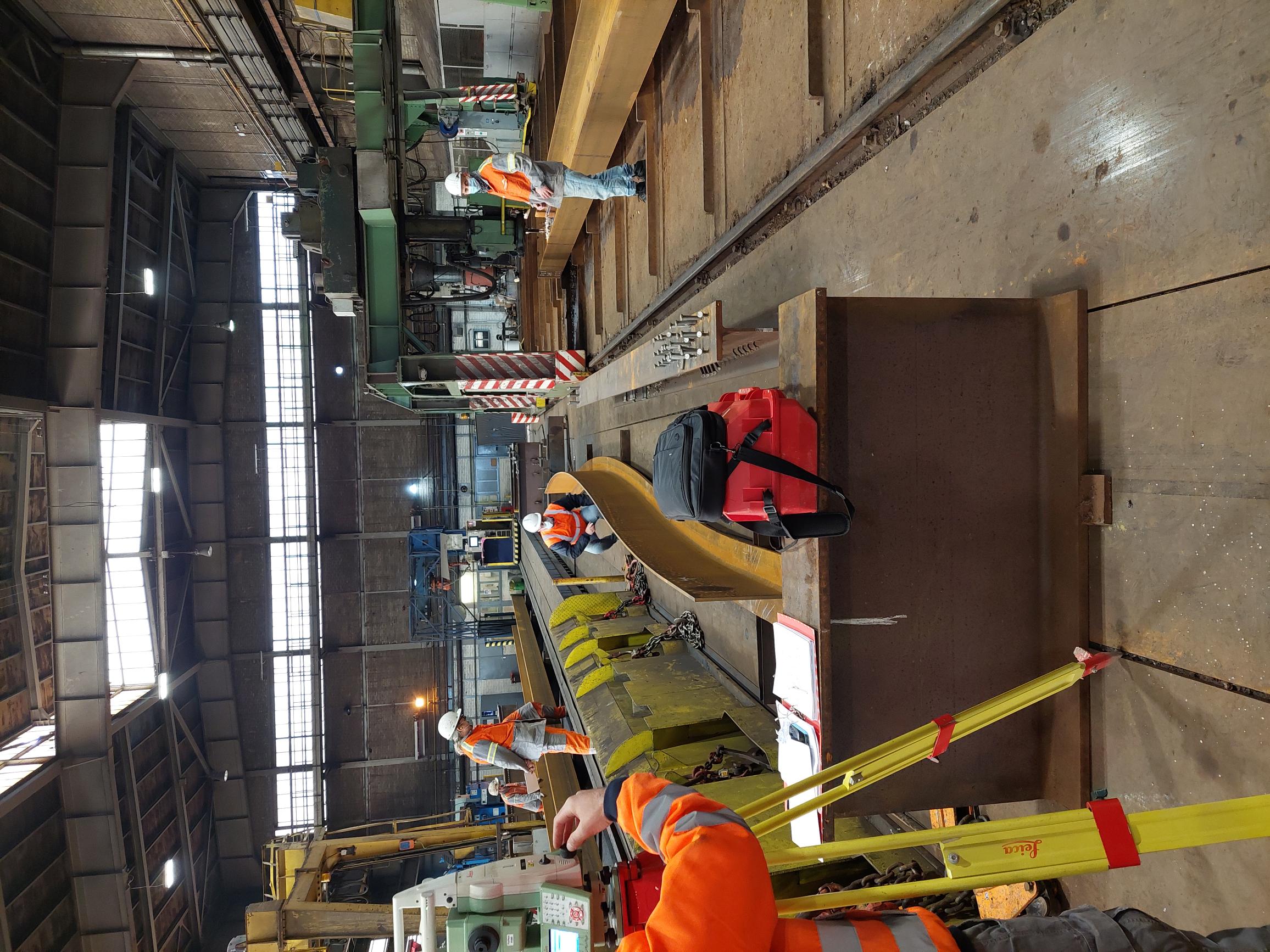The curves of Europe’s longest cycle bridge are made from XCarb® recycled and renewably produced steel
A new cycle and pedestrian bridge is being built in Esch, the 2022 European capital of culture and Luxembourg’s second city. This project is part of the overall development of the national cycling network, which includes linking Esch to Luxembourg City.
The carbon footprint of the whole project was a key element for the public authorities, from the choice of the route to the materials used to make it. Steel is unique in its infinite recyclability, and with ArcelorMittal’s XCarb® recycled and renewably produced steel, it has very low embodied carbon – approximately 300kg of CO2 per tonne of finished steel when made from 100% scrap and using renewable electricity. All these elements contributed to the selection of our steel for this project. However, our technical expertise was also requested to shape the curves of the bridge.
Engineer Pierpaolo Rossetto, Order Manager of Cimolai, ArcelorMittal’s client for the pedestrian bridge project, said: “At Cimolai, as a global operator in design, supply and erection of complex steel structures, we have a role to play in decarbonising the construction market. By purchasing XCarb® recycled and renewably produced beams, we could both follow our company’s vision of decarbonised construction works, and meet the needs of our customers who are also increasingly keen to do their bit to make our world more sustainable for the next generations.”
A successful trial for our very technical double-curved T-sections
The more complex an order, the more time it takes to ensure the quality of the steel – and the requirement for double curved T spliced sections presented some technical challenges. After the production trial at the end of 2021, the sample was tested by Cimolai against stringent technical criteria and approved at the end of the process.
In mid-January, our customer gave their green light for production to start, and in the coming weeks, the curved beams left our mill in Differdange, before taking their place in Europe’s longest cycle bridge.
The order is made up of three lots of steel products, some topped with impressive fabrication work. However every single tonne of steel has been requested – and will be delivered – in our innovative range of Arcorox® weathering steel, with the low CO2 emissions of XCarb® recycled and renewably produced label.
Arcorox® and XCarb®: the perfect, sustainable match
When designed with Arcorox® weathering steel together with XCarb® recycled and renewably produced, a bridge meets all cost, design and strength requirements, while achieving tomorrow’s most stringent embodied carbon and safety targets.
A bridge with Arcorox® sections is designed to last: no need for a protective coating now or in the future: maintenance is low, safety and usage remain high.
A bridge with XCarb® recycled and renewably produced steel is sustainable: to produce it, ArcelorMittal uses up to 100 percent scrap and electricity from renewable sources such as solar and wind power. Its carbon footprint as low as 0.3 tonnes of CO2e per tonne of steel product when using 100% scrap, is supported by a published environmental product declaration.
Three lots, from beams to double curved T spliced sections
A bridge of this size (1.2 km long, 4,5m wide, at 7,5m from ground) has to adapt to its environment and to fit in the existing landscape. So do the steel elements that are part of the project.
Basic elements in small sizes, like IPE200 and IPE600, will be ArcelorMittal’s most used beams on the project. They will be delivered from Belval and Differdange mills, to be used for the deck elements of the bridge. This part of the order has already been delivered to the customer.
Adding more technicity are 340 tonnes of HL1100 beams. They will be used as longitudinal elements of the bridge, in its straight segments. For the pedestrian bridge in Esch, these HL1100 sections will additionally be cut into T-sections at the Steligence® fabrication centre.
However, the most astonishing steel elements coming into that order are 200 tonnes of curved T-sections, which will be used in the turning segments of the bridge. This requires great expertise from the operators who do it. The first trial section has been tested by Cimolai, and fully approved, recognising the level of expertise of our team in the fabrication centre. Using a hydraulic press, two bends had to be brought to the beams, including a counter deflection.
While all the T-sections were bended on the weak axis, either in S-shape or in standard circular/parabolic shapes, some of these T-sections were also cambered on the strong axis. However, this requirement was nothing exceptional for our team of experts, but it did add complexity to their work. And pride in its achievement!
All you need to know about the pedestrian bridge
The bicycle and pedestrian bridge, linking Esch-sur-Alzette to Esch-Belval, will be the longest one of its kind in Europe. The main segment between Esch/Alzette and Belval is expected to be completed this year.
Construction will continue with carpentry work (cutting, assembling, welding, surface treatments and inspections) in the Cimolai factories in Friuli (Pordenone, Italy) on elements supplied by ArcelorMittal and will be completed by sending them to the construction site for assembly and placement using vehicles and personnel coordinated by the Italian company.
In the meantime, Giorgetti will take care of the civil works and will complete the work with the application of the treatment of the cycle-pedestrian surface.
Giorgetti is the company in charge of the project for the Luxembourgish administration, owner of the bridge. Metallic construction has been subcontracted to the Italian company Cimolai, which is buying over 1000 tonnes of steel sections from the ArcelorMittal plants in Luxembourg – Differdange and Belval, half of them being then processed in the Steligence® fabrication centre.
Cimolai operates globally in the design, supply and erection of complex steel structures ranging from bridges and stadiums, to architecturally complex buildings and structures for the off-shore and oil & gas sectors, these being either commodities (pipes, plate girders, etc.) or complete assemblies (modules, platforms, pressure vessels, etc.).
Click here to take a virtual ride, or watch the two webcams.


















